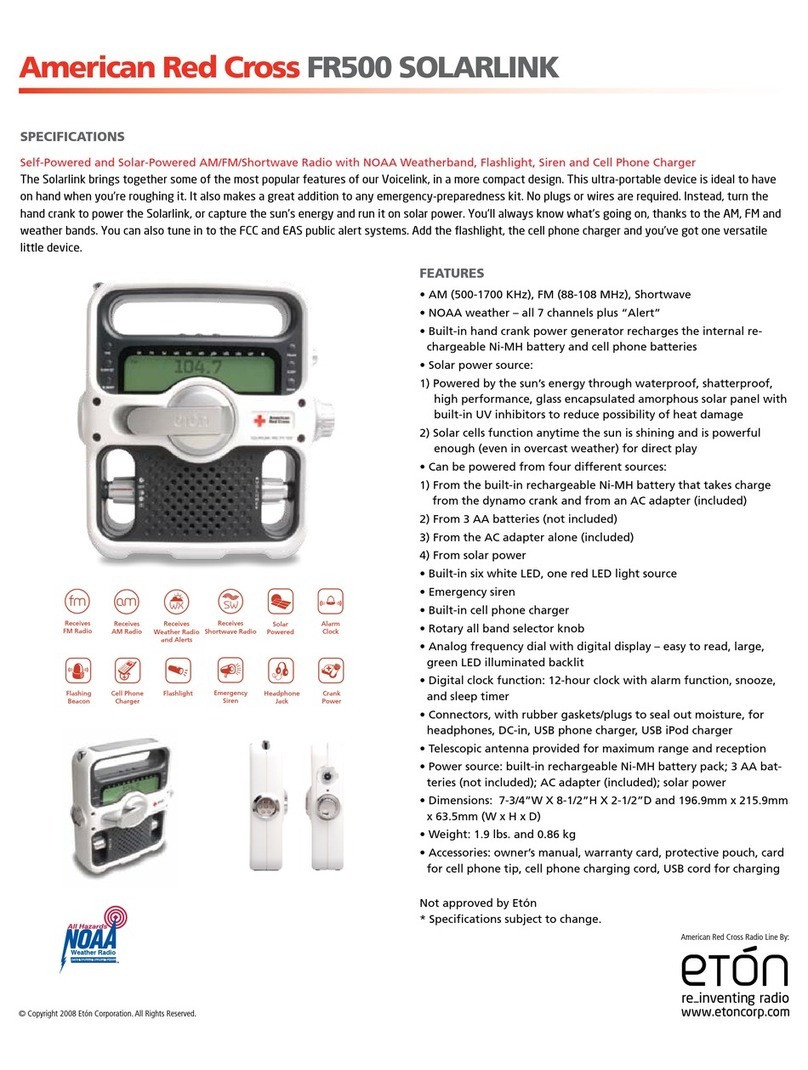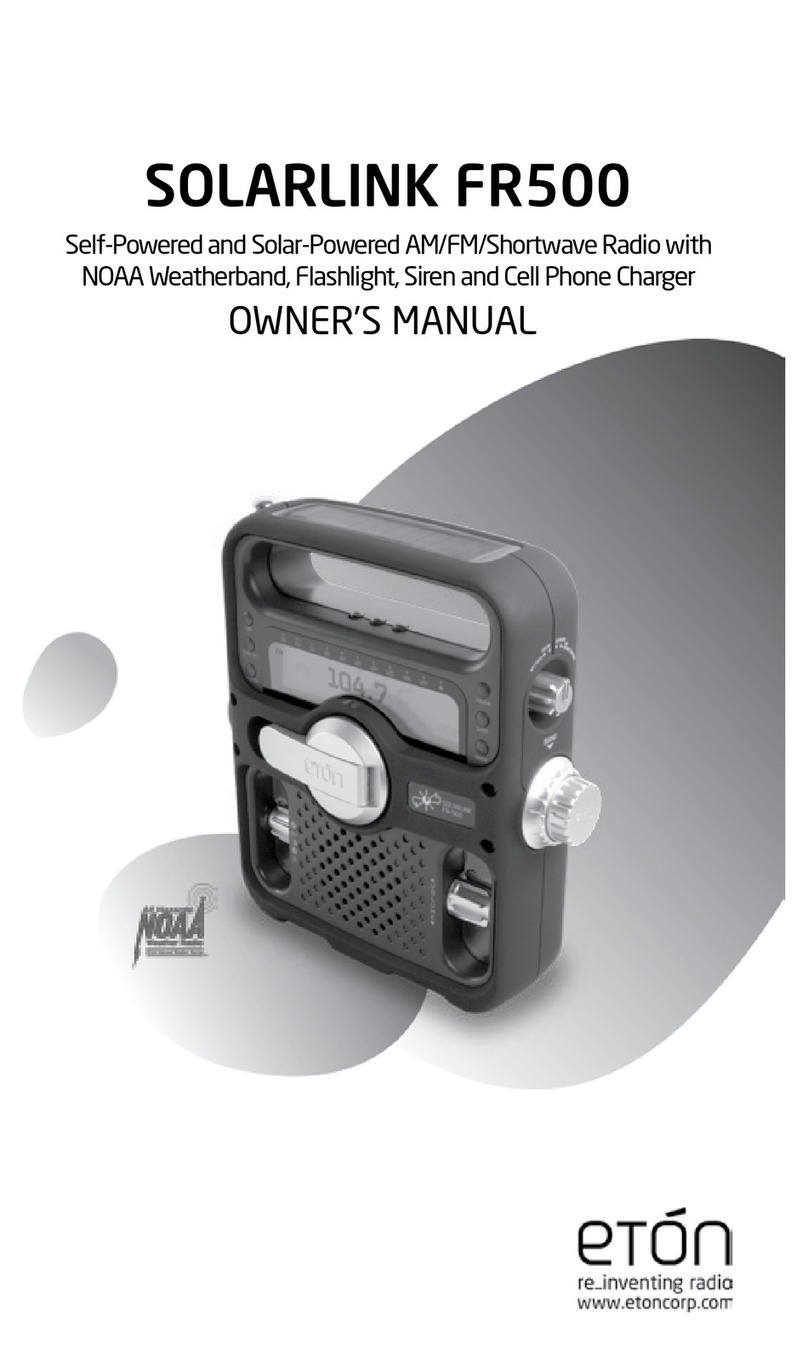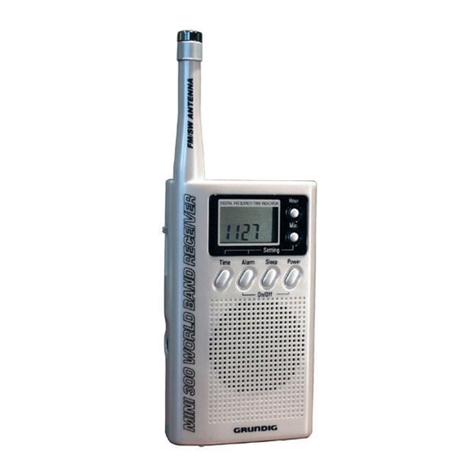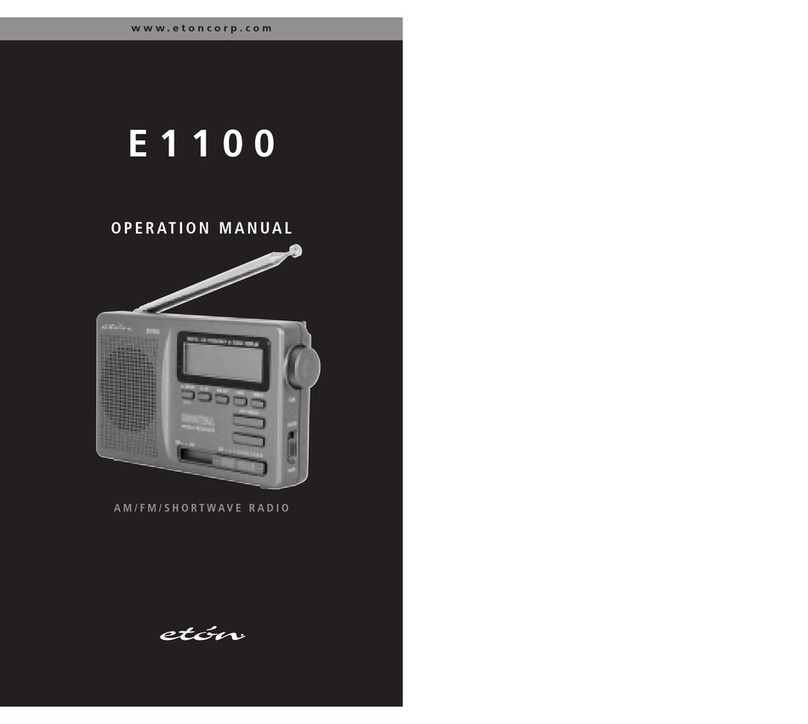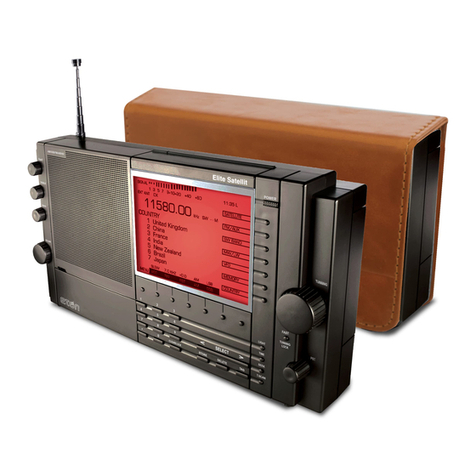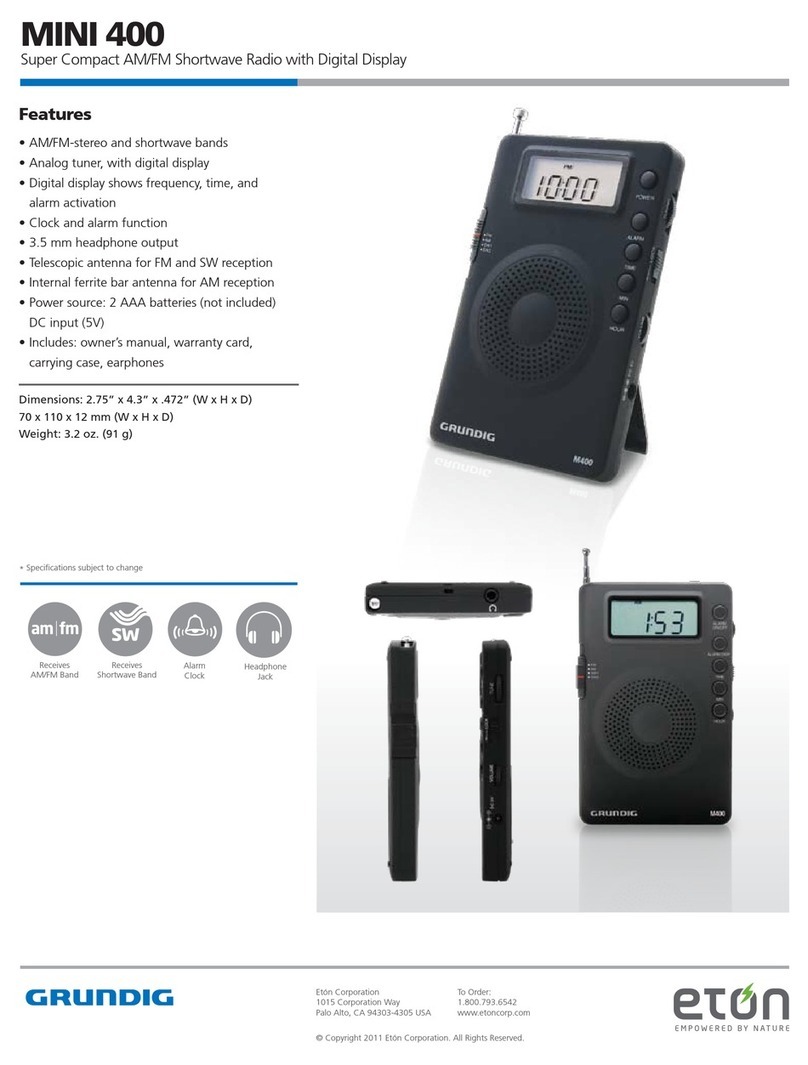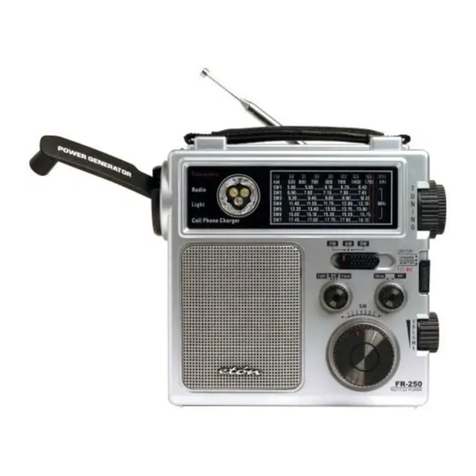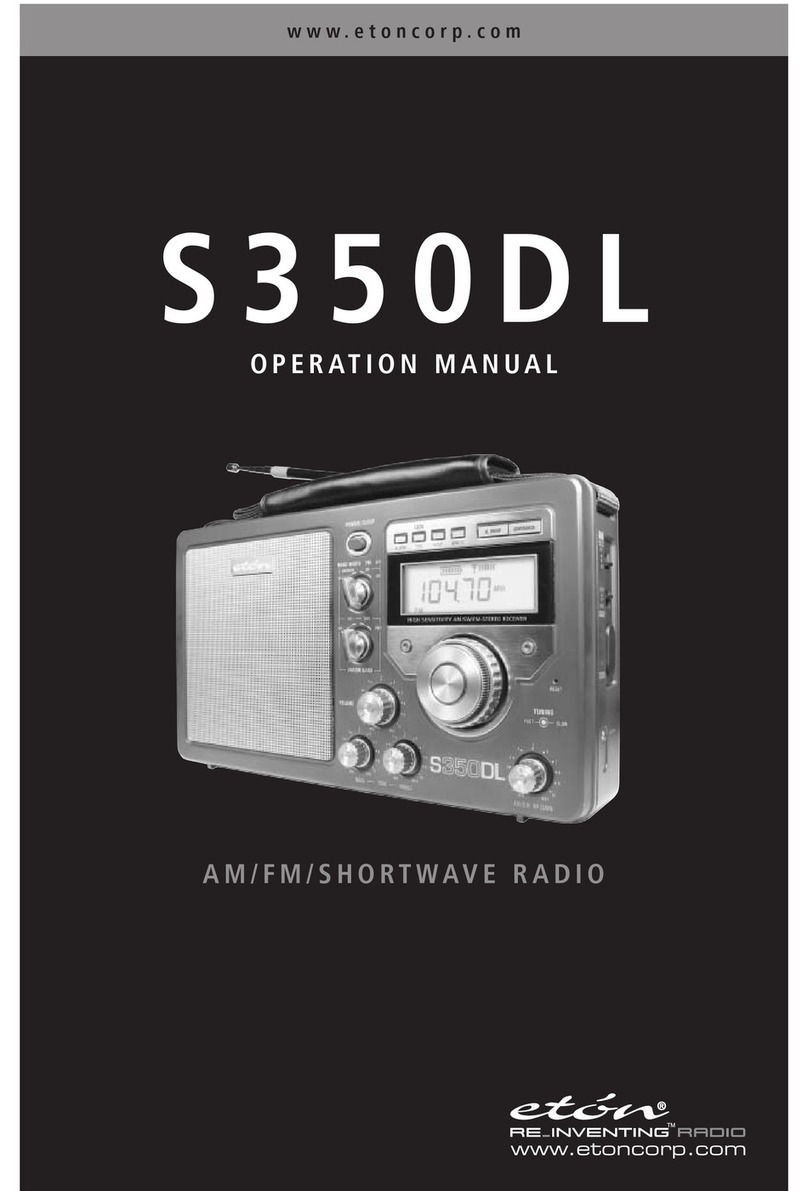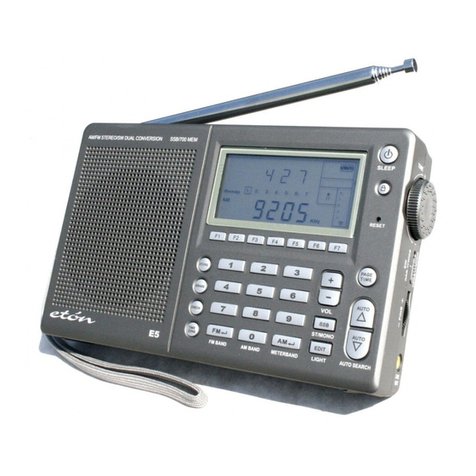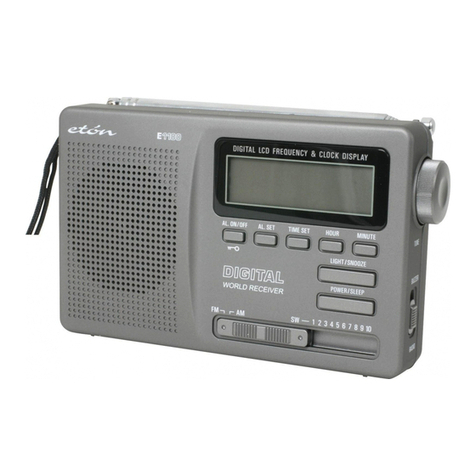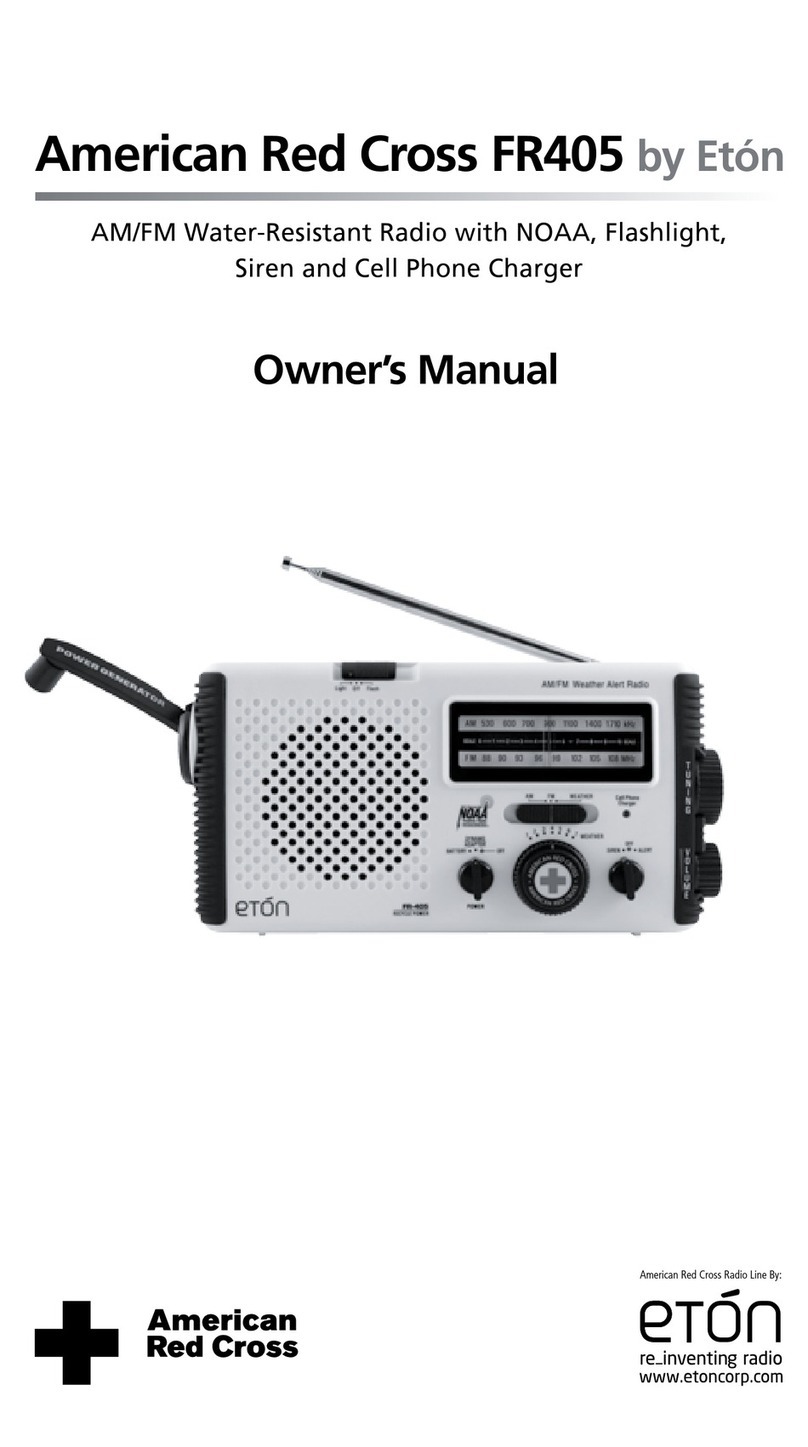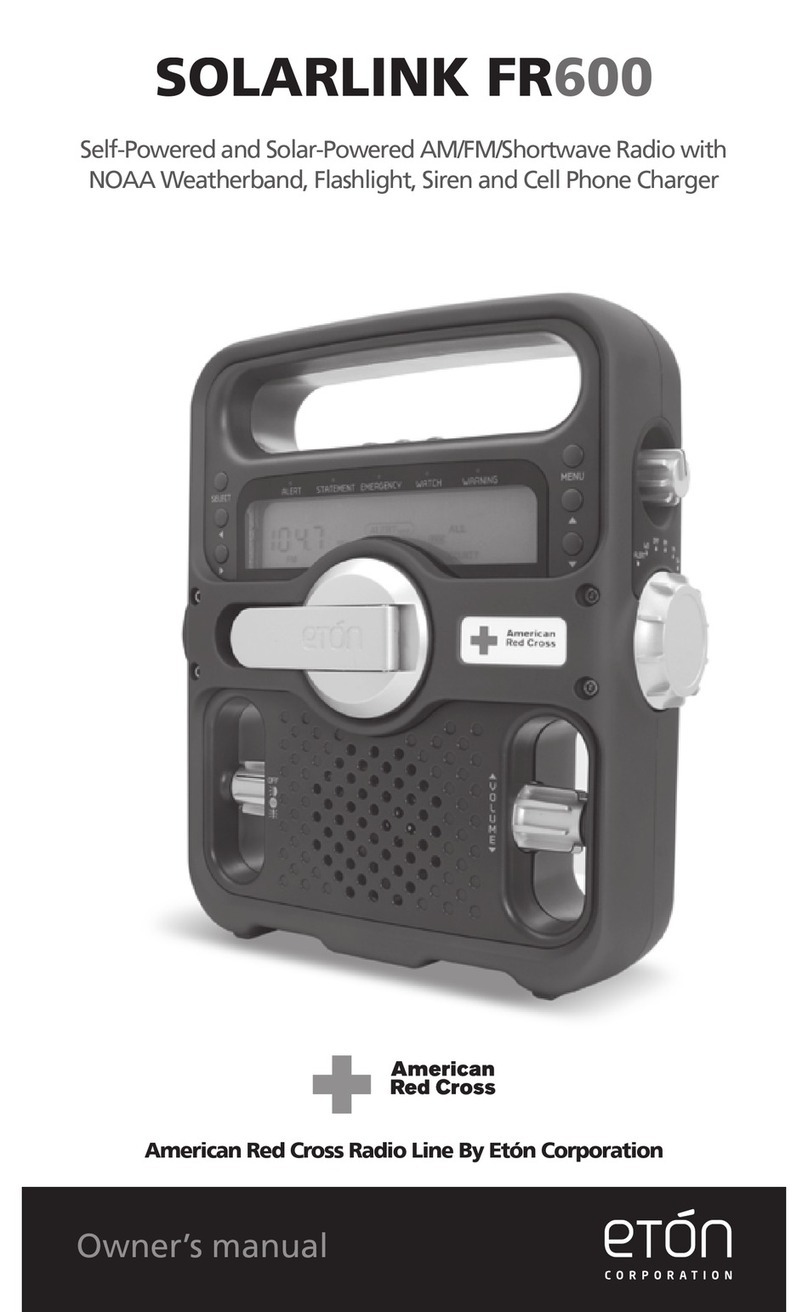SHORTWAVE LISTENING
Press the POWER button to turn it on and off.
With the SATELLIT 750 on, turn the VOLUME knob, located in the lower left
front, clockwise to increase the volume, counterclockwise to decrease the
volume.
The Satellit 750 receives FM on 88-108 MHz, AM on 520-1710 KHz,
Longwave on 100-519 KHz, Shortwave on 1711-29999 KHz and Aircraft
on 118 -137 MHz.
Turn the Satellit 750 on. Select FM by pressing the FM button, MW(AM)
and Longwave by pressing the MW/LW button (press it twice if necessary),
Shortwave by pressing the SW button sequentially until you have selected
the desired band (the band number ashes in the upper right corner of the
display) and the Aircraft band by pressing the AIR button.
NOTE: Be sure to fully extend the telescopic antenna when listening to
SW, FM and AIR. The swivel AM antenna is located at the top of the radio;
swivel it for best AM reception.
The Satellit 750 receives shortwave on all meter bands and between the
meter bands. A band is a frequency range that contains shortwave stations.
All 14 of the international broadcast bands can be accessed. The bands are
numbered 120, 90, 75, 60, 49, 31, 25, 22, 19, 16, 15, 13 and 11 meters
and are commonly called ‘Meter Bands’. Bands with frequencies above
13000 KHz are best during the day; below 13000 KHz are best at night. To
access the beginning of a band, press SW over and over. As you press you’ll
see the band number on the upper right side of the display. Just go to the
beginning of a band and start tuning.
To learn about shortwave we recommend the two publications below, pub-
lished yearly and available from major booksellers. Additionally, the Internet
is a great resource for learning about shortwave.
PASSPORT TO WORLD BAND RADIO Published by International Broad-
casting Services (IBS); IBS North America, Box 300, Penn’s Park PA 18943.
Phone: (215) 598-9018. www.passband.com.
WORLD RADIO TV HANDBOOK Published in the USA by Watson-Guptill
Publications, 770 Broadway, 7th Floor, New York, NY 10003-9595. www.
watsonguptill.com.
Shortwave enables listening to broadcasts over vast distances including
other countries and continents. The following information will help you get
the best results.
• During the day, use bands with frequencies above 13000 KHz.
• At night, use bands with frequencies below 13000 KHz.
• Around sunset and sunrise, use bands with the entire shortwave range.
• Getting very close to a window improves shortwave reception.
SSB enables listening to shortwave two way communications using the
single sideband mode such as amateur radio, Morse code, weather-fax
transmissions and other signals often referred to as ‘utility’ signals. The
Internet and your local library are great resources to learn more. Type ‘ama-
teur radio frequencies’ or ‘sideband’ into an Internet search engine.
VOLUME CONTROL
OPTIMIZING SHORTWAVE RECEPTION
SSB (SINGLE SIDE BAND) TUNING
TURNING THE SATELLIT 750 ON AND OFF
SELECTING FM, MW(AM), LW, SHORTWAVE
AND AIRCRAFT BAND

